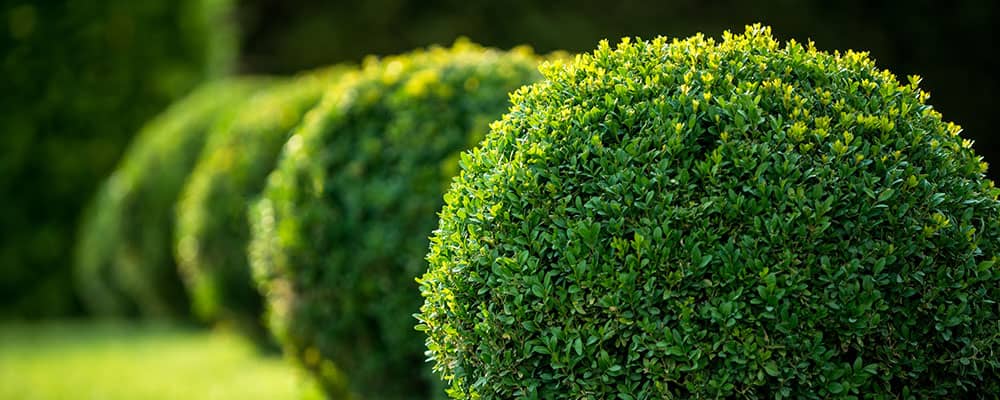Tailor Landscaping to Your Needs
- Shantell Russell
- Home Life

Landscaping enhances your home's exterior appearance. When planning a landscaping design, you should tailor it to where you live and what you are trying to achieve with your outdoor space. Knowing exactly how to create the perfect landscaping design can ensure you boost overall curb appeal while also meeting your needs.
Four-Season Climates
The winter causes the most stress and havoc on landscaping. Dealing with the long cold months can be a challenge. Fortunately, you can adapt and ensure your landscaping looks good all year long by implementing a few simple tricks.
Using trees and shrubs to create windbreaks is a great way to protect your landscaping, according to the U.S. Department of Energy. In addition, this can help act as a barrier for your home and help keep your home warm during the cold months without driving up your energy bill during the winter.
Incorporating plants that stay active while the weather is colder can also help enhance the appearance of your home all year long. HGTV recommended planting Oregon grape holly, evergreens and viburnum which also emit an enjoyable scent.
Berries add pops of color that work well with any landscape design. The evergreen American holly and deciduous beauty berry would serve as great additions to any landscape.
According to Better Homes and Gardens, four-season perennials are great for long winters and will continue to thrive during the springs, summers and falls throughout the years. When visiting your local garden center, ask a professional whether the plants you select also have foliage during the winter months.
Selecting a tree with a beautiful and interesting bark may also enhance your landscape design. Consider planting birch trees and dogwoods for this reason.
Desert-Climate Landscaping Suggestions
If you live in a warm and dry climate, the heat and absence of rain may be detrimental to your back yard. In addition, expensive water bills may wreak havoc on you bank account. Creating a landscaping design that considers your unique needs in a hot and dry climate can help you save money without sacrificing curb appeal.
Use shade to improve the conditions your shrubs, trees and flowers live in. According to SF Gate, find plants that are native to a desert-like environment. Working with the conditions makes tending to your plants monumentally easier. Some great options include:
- California Lilac
- Perennial Salvia
- Catmints
These plants add beautiful colors, are tough and can weather the hot and dry conditions very well. The oasis strategy is another great way to landscape in a desert-like climate. Simply place plants that require more water close to your home and water sources. The shade offered by your house may also help these plants retain water.
HGTV also recommended using rocks, stones and tile to provide pops of fun accent colors. While the desert's color pallet is often made up of browns, tans and grays, adding tile work or stones that are a different shade can help enhance the overall curb appeal.
Additionally, you should think about the various shapes, colors and durability of the shrubs, trees and other plants you decide to include in your landscaping. Make sure everything successfully compliments each aspect of the design as well as your home.
Plant for Heat and Humidity
Hot and humid weather often found in the South provides a great environment for many beautiful types of plants. Better Homes and Gardens recognized many blossoms that do well in this climate, including:
- Hibiscus
- Crested Iris
- Sea Oats
- Swamp Lilies
- Bee Balm
- Woodland Phlox
- Helen's Flower
- Indian Pink
The Indian pink attracts beautiful hummingbirds to your home and planting them along your house is a great way to enjoy nature.
Speak with a garden center professional to ensure you properly care for the plants you incorporate in your landscaping design.
Incorporating Eco-Friendliness into the Design
Environmental impact is another concern some homeowners may have regarding their current landscaping design. If this is something important to you, you can improve the eco-friendliness in a number of ways by addressing the overuse of the following items:
- Water
- Gasoline
- Pesticide
- Chemical Fertilizers
By collecting rainwater, cutting down on the use of lawn landscaping equipment and using natural pesticides and fertilizers, you can improve the quality of your landscaping without negatively impacting the environment.
For a non-toxic pest control alternative, Earth Easy recommended that instead of using chemicals to keep insects and other pests away, use natural alternatives. Seaweed serves as a great mulch and regularly rotating plants can help keep pests away from the plants in your landscape design. Pulling weeds and using fresh mulch can also help eliminate the environment insects prefer to breed in and cut down on pests in your plants.
The Environmental Protection Agency noted that using native plants and starting a compost pile can also help greatly.
When creating a landscape design, consider your environment as well as what is important to you to ensure it not only enhances your curb appeal but also matches your wants and needs.
